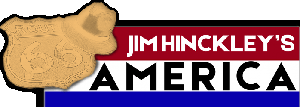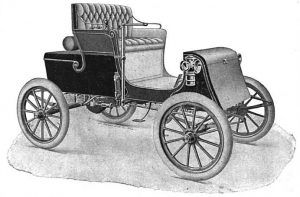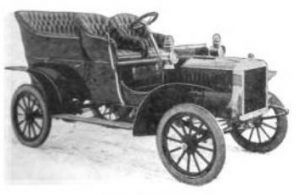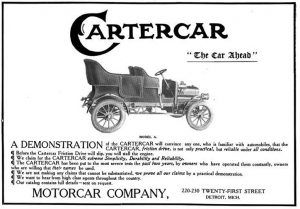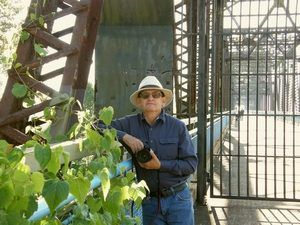by Jim Hinckley
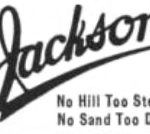
During the formative years of the American automobile industry, an untold number of progressive thinking American cities vied for the title motor city in the hope of striking Industrial Gold. Counted among the leading contenders was Jackson, Michigan.
In Jackson, one of the earliest automotive proponents was Byron J. Carter, whose diverse manufacturing endeavors included bicycle and steam-driven press components as well as rubber stamps. In 1899, his growing fascination with the automobile manifested as a gasoline-powered prototype.
However, as his familiarity was with steam engines and related equipment, a steam-powered Stanhope manufactured by the Michigan Automobile Company of Grand Rapids, Michigan, in 1901 became his first marketable vehicle. The following year Carter patented a three-cylinder, six-horsepower steam engine, obtained financial backing from Charles Lewis, president of Lewis Spring & Axle and Union Bank of Jackson director, George A. Mathews, owner of the Fuller Buggy Company and director of the Jackson City Bank, and incorporated the Jackson Automobile Company.
At the behest of his partners who were hedging their investment gamble, the company manufactured automobiles with steam engines under the Jaxon name and six horsepower gasoline-powered automobiles under the name Jackson. Promoted with an advertisement that proclaimed, “Steam is Reliable and Easily Understood,” the Jaxon was a 1903 only model as the directors’ refusal to fund the development of Carter’s friction drive transmission led to his departure from the company.
Without the innovative Byron Carter, the Jackson became just another product from another automobile manufacturing company but one with a well-deserved reputation for durability. The companies slogan, “No Hill Too Steep, No Sand Too Deep,” was not an idle boast but one built upon customer experience.
Before merging with Dixie Flyer and National, the company soldiered on for another twenty years with only a few deviations from the conventional. One year, 1919, was devoted solely to the manufacture of trucks. Perhaps the most unusual expression of independent thinking to come from the company was the Duck in 1913, a vehicle driven from the back seat.
Byron Carter, after leaving Jackson, the company, quietly assembled resources and financial backing for another automobile manufacturing company, one that would utilize his revolutionary and patented friction drive transmission. The resultant Motorcar Company was associated with the city of Jackson for, but a brief time as in 1906, Carter reorganized the company under the Cartercar Company name and relocated operations to Detroit.
Another automotive pioneer associated with Jackson was David Buick, who initiated a timid, fledgling attempt at automobile manufacturing in this city. The endeavor was short-lived, but it had given a boost to several specialty machine shops that would later provide key components to a number of companies, including Ford, Olds, and Maxwell.
By 1914, the year Benjamin Briscoe established Briscoe Motor Corporation in Jackson, both Briscoe and the city were automotive manufacturing veterans. Benjamin Briscoe’s initial automotive venture was as the financier behind the formation of Buick Manufacturing Company in 1902. His second automotive venture came in 1903 with the formation of a partnership with Jonathan D. Maxwell.
This partnership culminated with the creation of Maxwell-Briscoe Motor Company in 1905. Briscoe utilized this successful endeavor to create the United States Motor Company, a General Motors styled conglomerate that collapsed in 1912.
His next endeavor proved to be even less successful. Hoping to capitalize on the cyclecar craze, Benjamin and his brother Frank established Briscoe Freres in France and imported the cars into the United States under the Argo name.
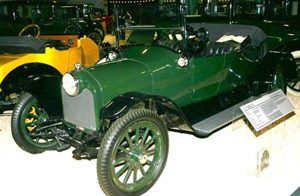
1915 Briscoe B-15 Cloverleaf Roadster. Photo from RemarkableCars.com
Undaunted by his string of failures, Briscoe, with the financial resources of the Swift family of Chicago as the cornerstone, launched the Briscoe Motor Corporation on a solid foundation in Jackson. The companies’ initial offering debuted at the New York Automobile Show in 1914 to mixed reviews, largely the result of unconventional styling.
The car utilized compressed paper-mâché composite panels over wood framing for the body. Like Pierce-Arrow, the car featured a flared headlight. However, unlike the offerings from the luxury car manufacturer from Buffalo, the Briscoe featured but one headlight mounted at the top center of the radiator housing!
Until the companies demise in 1921, highly unorthodox thinking dominated the boardroom. In 1916, the company promoted vehicles with an advertisement that proclaimed, “Buy the Four. Use it a month. If then you decide you want the Eight, simply pay the difference and a small charge for installation work.”
A smaller model with French designed air-cooled, four-cylinder engine appeared late in the same year. Offering easy assembly plans for a four-cylinder automobile, utilizing components supplied by Briscoe, to any community that wished to become an automotive manufacturing site followed in mid-1917.
The last gasp came with a daring plan to cut costs through product simplification. Working with his chief engineer, Jules Haltenberger, Briscoe designed interchangeable spring shackles, a reversible propeller shaft, identical castings for the clutch and brake pedals, and the use of one-size bolts for most chassis components. The result was the desired cost-cutting through simplified production and an automobile fraught with a never-ending array of component failures.
The automotive manifestation of independent thinking in Jackson did not end with the closure of Jackson, Briscoe, or the dozen or so other manufacturers that operated in the city before 1920, nor did the quest for industrial gold. The final chapter was written in late 1953 with the initial production of the stunning Kaiser Darrin in Kaiser’s Jackson facilities.
©Jim Hinckley, December 2012, updated June 2021.
About the Author: Jim Hinckley is an award-winning author and photographer and an official contributor to Legends Of America through a partnership developed in October 2012. Hinckley is a former Associate Editor of Cars and Parts Magazine and author of multiple books, including several on Route 66. You can follow him on Jim Hinckley’s America.
Also See:
Legends of the American Automobile
Jim Hinckley – Author & Legends of America Contributor
Transportation Photo Galleries

